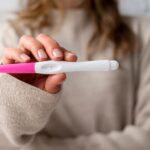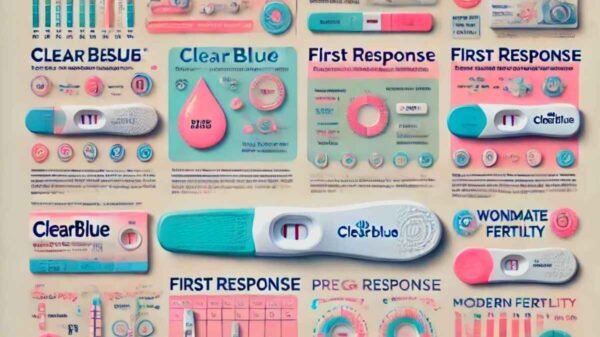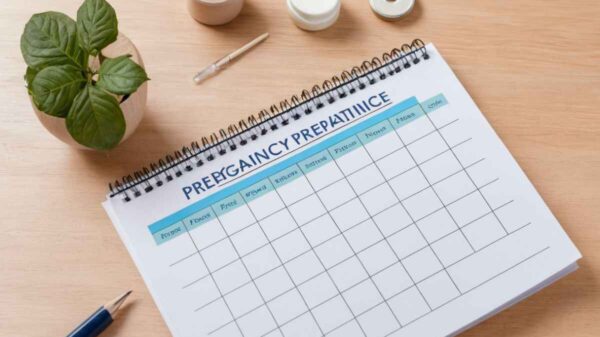Now that you have a basic understanding of when you can take a pregnancy test after unprotected sex, it’s time to dive deeper into the best practices for accurate results. In this stage, we’ll explore solutions to help you test at the right time, manage expectations, and interpret your results confidently. Whether you’re testing for the first time or trying to get clarity after a missed period, this article will guide you through everything you need to know.
Testing too early can lead to frustration and false negatives, making it vital to understand the right timing. Knowing when and how to test ensures accurate results and reduces uncertainty. Prepare by selecting the best method, following instructions carefully, and recognizing key signs that might guide your next steps for confirmation.
Critical Considerations for Testing After Unprotected Sex
Several factors are crucial when deciding the best time to take a pregnancy test. The timing of ovulation, the moment of fertilization, and the time it takes for hCG levels to rise all play a role in determining accurate results. Understanding these factors can help you plan your test effectively.
Here are some key considerations to ensure you test at the right time:
Ovulation Timing
Tracking ovulation is essential for accurate pregnancy testing. It helps estimate when fertilization might have occurred, guiding the best time to test after unprotected sex. This ensures more reliable results.
Fertilization Window
Sperm can survive in the reproductive tract for up to 5 days, meaning fertilization may occur if ovulation happens within this time. Testing too soon after unprotected sex may lead to inaccurate results, as fertilization and implantation take time. Waiting until after ovulation ensures more reliable outcomes.
Implantation Window
After fertilization, it takes about 6-12 days for the fertilized egg to implant in the uterus. Once implantation occurs, your body starts producing hCG, the hormone detected by pregnancy tests.
How Long After Unprotected Sex Should You Wait to Test?
Pregnancy tests are most valid when taken at the right time. While early tests claim to detect pregnancy within a few days of ovulation, the following timeline will help you decide when to take the test:
- Testing 7-10 Days After Ovulation: Some early detection pregnancy tests can be used as soon as 7-10 days after ovulation. These tests are more sensitive to hCG, but they may still show a false negative if hCG levels are not yet high enough. It’s important to wait for the recommended time for more accurate results.
- Wait Until the Missed Period: The most reliable time to take a pregnancy test is typically after your missed period, which is around 14 days after ovulation. By this time, hCG levels are usually high enough for most tests to provide an accurate result.
Remember, testing too early can lead to a false negative, even if you are pregnant, because hCG levels may be too low in your urine for detection.
How to Interpret Pregnancy Test Results
Understanding how to read the results of your pregnancy test is critical for making informed decisions. Here’s what you need to know:
Negative Results
If you receive a negative result early on, it doesn’t necessarily mean you’re not pregnant. It could be that your hCG levels haven’t reached a detectable level yet. Since hCG rises over time, retesting after a few days could give you a more accurate result. Patience is key when testing for pregnancy, especially in the early stages.
Positive Results
A positive pregnancy test indicates the presence of hCG in your urine, confirming pregnancy. However, it’s essential to follow up with a healthcare provider, especially if you experience symptoms like bleeding or cramping, as these could indicate complications such as a miscarriage. Always seek medical advice to ensure your health and well-being.
Faint Line
A faint line on a pregnancy test may indicate early pregnancy, but it’s essential to read the result within the recommended time frame. Waiting too long can lead to a false result, as the line may appear due to evaporation. For the most accurate outcome, follow the test instructions carefully.
Choosing the Right Pregnancy Test for You
There are several types of pregnancy tests available, and choosing the best one for your needs depends on your preference for convenience, sensitivity, and the timing of the test.
Early Detection Tests
These tests are designed to detect pregnancy earlier than standard tests. While they claim to detect hCG as early as 5-7 days after ovulation, their accuracy is still lower compared to waiting until after your missed period. Testing too early can lead to false negatives, as hCG levels may not be high enough to be detected. For more reliable results, it’s best to wait until your period is missed.
Standard Tests
Standard pregnancy tests are reliable when taken after a missed period and are easy to use with a simple urine sample. They are widely available and affordable and offer accurate results when used as directed. These tests are a convenient option for many people looking to confirm pregnancy at home.
Digital Tests
Digital pregnancy tests provide a clear “Pregnant” or “Not Pregnant” result, eliminating any confusion caused by faint lines or unclear readings. While they are generally more expensive than traditional tests, they offer ease of use and more explicit results. Despite their higher cost, many find them helpful for reducing uncertainty during the testing process.
Managing the Waiting Game: Coping with Anxiety While Waiting to Test
Waiting for the right time to test can be a nerve-wracking experience. Here are a few tips to help manage the anxiety that often accompanies this period:
- Track Your Symptoms: Keeping a journal of your symptoms, such as fatigue, nausea, or mood swings, can help you track changes in your body. This practice allows you to stay calm, recognize patterns, and better understand the best time to take a pregnancy test.
- Stay Busy: Engaging in activities that distract you, such as reading, exercising, or spending time with loved ones, can help reduce stress while waiting for your test day. Staying busy can prevent you from overthinking and ease any anxiety about the results.
- Speak to a Trusted Companion or Family Member: Talking about your concerns with a trusted friend, partner, or family member can significantly reduce anxiety. It helps you process your feelings and approach the situation with a calmer, clearer mindset, making it easier to navigate the next steps.
The Right Timing for Testing
Choosing the right time to test for pregnancy after unprotected sex is crucial for getting accurate results. While early detection tests can be used as soon as 7-10 days after ovulation, it’s usually recommended to wait until after a missed period for the most reliable results. Keep in mind that symptoms like missed periods, morning sickness, and fatigue may prompt you to test earlier, but the timing of your test is just as important as your symptoms.
If you’re still unsure about when to test, or if you get a negative result and still suspect pregnancy, don’t hesitate to reach out to a healthcare provider for guidance.
Find Out the Best Time to Test for Pregnancy
Are you unsure how soon after unprotected I can test for pregnancy? Get expert guidance on understanding your body’s signals, when to test for the most accurate results, and how to manage your fertility. Visit our resources now for clear, trusted advice!











